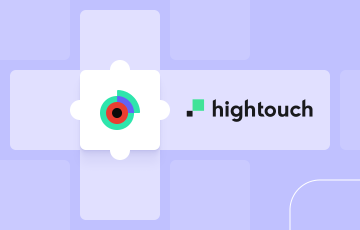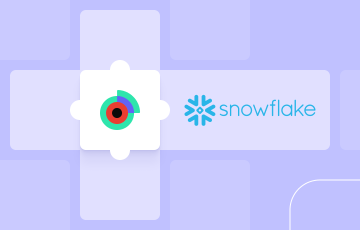Think back to your “whys” and take a closer look at consumer psychology: Eden Bidani
This interview is part of Kameleoon's Expert FAQs series, where we interview leading experts in data-driven CX optimization and experimentation. Eden Bidani is a conversion copywriter whose company, Green Light Copy, helps online businesses drive more traffic with conversion-focused copy.
Hi Eden, thanks for joining us! You’ve often spoken about how your background in anthropology has helped you in sales and copywriting. Can you start us off with some anthropology book recommendations?
That question took me on a trip down memory lane! I honestly haven’t read many new Anthropology books lately, but I’m looking forward to getting some new ones. One that stood out (which I haven’t yet read personally but looks pretty solid) is Perspectives: An Open Introduction To Cultural Anthropology, which is a free online textbook.
Anthropology is actually split into many different specialties including Cultural, Linguistic, Physical (or biological), and Archaeology. But Anthropology in general is fascinating as it lets you look at things that are familiar to you through different lenses.
One small example, a couple of days ago I read a news article about an anthropologist who is challenging what we consider “normal” or “natural” sleep habits, particularly the glorifying of the 8-hour sleep block—especially as people have struggled with sleep for millennia (it’s not a “new” thing!)
It challenges the way you think, which leads to you challenging (or at least, asking probing questions) about why others think and act the way they do. It makes you question everything, which leads to a ton of incredible insights.
Creativity in A/B testing
What makes you confident that AI will never replace human copywriters? What about AI as a tool—Do you think AI can help copywriters and brands optimize their copy?
Good question—AI will never replace copywriters unless it can also replace what people do, and that’s the “creative strategy.” When I say creative, it’s not always coming up with new ideas, but sometimes finding the common thread in two completely opposite subjects and tying them together in a way that still makes sense.
Just think of ads (for example, some recent Lego ads) that tell a story and make a point on the page, but actually use zero copy to do so. A copywriter would have created the “big ideas” behind those ads, even though there’s no actual copy. So until AI can do that, then it won’t replace copywriters.
That said, there is definitely room for AI in helping copywriters and brands optimize their copy, especially in terms of speed. Not too long ago I had a project that was 200+ Google Ad variations for a skincare brand. My brain was numb by the end of it, but I could have done it better and faster if I had AI to help me out.
There's a divide between “numbers” people and “creatives” in marketing, with CRO and A/B testing falling more in the former. What can experimentation learn from the creative disciples, e.g. copywriting, advertising?
From my perspective, I don’t see copywriters as “creatives” or CROs/experimenters as “numbers people”—we’re all really aiming for the same thing: to drive conversions.
What I think can be helpful for experimenters to absorb from the more creatively-slanted marketing disciplines is to keep thinking back to your “whys” and taking a closer look at consumer psychology. Why are you running this test? Why do you think this will have an impact? Why would the target audience react differently to this?
Often we think of things in a linear process (i.e. deploy psychological trigger, subject reacts to trigger, study the results) but people aren’t like that! If you understand why they think the way they do, if you understand what’s happening in their world and what they’re currently thinking/struggling with, you’ll be able to come up with more interesting hypotheses and conduct more impactful tests instead of being reactive to metrics as they go up and down.
Writers are known for their processes. As a conversion copywriter, what’s yours?
My process is pretty simple, it’s 3 steps: research & discovery, writing, and learning & validation. Research & discovery is 80% of the work, it’s the deep dive where I learn all about the company and its product, from speaking with department heads to interviewing their customers and conducting market research. That data then feeds the strategy and messaging that gets implemented via the copy, which is then tested (either pre-launch, post-launch, or both) in the learning & validation phase.
Practical tips for brands A/B
Besides A/B testing copy variants, how do you work with brands to use more advanced user data and implement sophisticated techniques— multivariate testing, contextual targeting, etc.?
In this case it really depends on what types of deliverables we’re working on in the scope of the project. But when it comes to multivariate testing, for example, that’s why I love going deep on research & discovery. The user research that you do can uncover different value propositions (that weren’t considered as such from the POV of the company) or even new marketing angles and customer objections (that weren’t previously addressed in the copy).
It’s a matter then of combining all the different data points together, qualitative and quantitative, to propose a strong hypothesis about what the copy should say, to who, and how, and where (both in terms of on the page itself or in terms of the wider funnel or customer journey). That leads to more deeply impactful tests—and 99% of the time, to very interesting results!
Your LinkedIn posts are a mix of actionable tips and great memes. How can brands, especially enterprise brands, stop being boring? Was there a moment that social media clicked for you?
One quick way for enterprise brands to stop sounding boring is to drop the business jargon that fills so many of their posts and speak (or rather, write) to their target audience in their target audience’s own words. If you can speak to someone in a language that makes sense to them, they immediately feel “seen” and understood by you. Which makes them more receptive to hearing the messages you want to share with them.
That means of course, that you have to invest in social listening and deep user research to understand how your audience communicates when you’re not in the room. But once you do that, you will be able to capture their attention more effectively and make a deeper, more positive impression on them.
What is one A/B test you ran that especially surprised you or your client?
One of the most significant A/B tests I can remember was for a client’s cold traffic landing page. The client’s original version was converting around 4.5%. The agency I was working with redid the page and had a new control converting around 10%. But both versions were shying away from the fact that the product, a device for insomniacs, was 76% effective. 76% is not an “attractive” number from a marketing perspective, so it was glossed over or avoided in both variations.
When I went back over the user research, it was surprising to realize that most people didn’t care. They cared that the device wasn’t another pill and that it was training them to sleep better by themselves so they wouldn’t need to use it every day for the rest of their lives. So I switched the narrative around and created a new version that owned this stat and referenced the fact that this result was impressive, given that it was a long-term solution and didn’t use chemicals. Bottom line, the new page converted at over 21%. Sure, we were hoping it would convert better, based on the data. But we were pleasantly surprised to see such a huge increase when many of the other page elements stayed the same.
Pay it forward? Who do you think deserves to be featured for their work in experimentation?
Manuel da Costa. He has a super bold approach in helping companies build true internal cultures of experimentation and has some fascinating thoughts and advice on this.
Find out how Kameleoon's powerful, AI-driven A/B testing and personalization can make your organization more customer-centric and competitive. Book a demo today.


